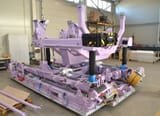Anonymous
8/14/2025, 8:37:34 PM
No.2938248
[Report]
>>2938283
>>2938287
>>2938306
>>2938325
>>2938361
>>2938398
>>2939029
>>2939414
>>2939427
Metal sheet planes
How did they designed sheets?? How did they calculated where holes should be to be sinchronized? How or what CAD they use to desing them sheets (computer days)?
Did they just make skeleton and put sheets and cuted excess out then just drilled? Like paper models? Or what? Really dont know.
Did they just make skeleton and put sheets and cuted excess out then just drilled? Like paper models? Or what? Really dont know.



